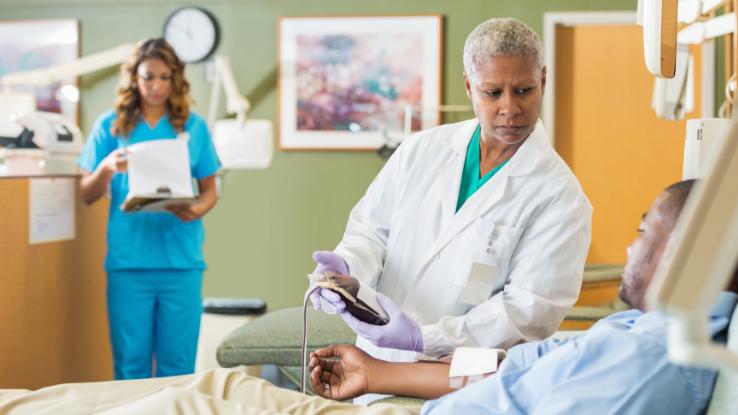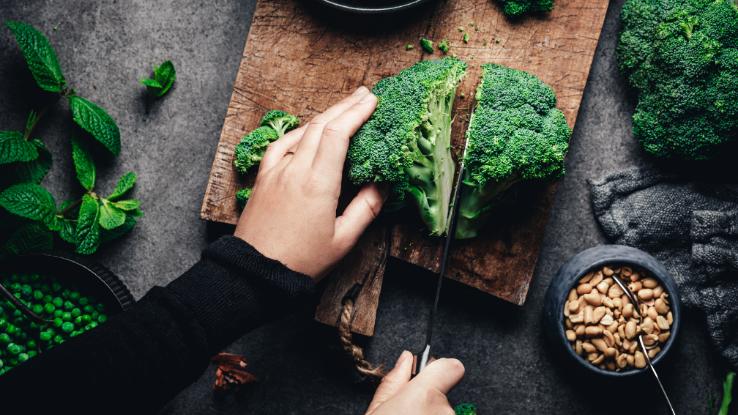
Iron may be a metal, but it’s one that we need to live. In fact, iron is an essential mineral — not just for humans, but for most life forms on Earth. It’s so important, in fact, that many foods are actually fortified with iron to ensure that we get enough each day. When an individual’s diet contains either too much or too little iron, the side effects can be severe. Not sure where your iron intake falls? Here’s everything you need to know about this essential mineral.
What Does Iron Do?
The majority of the body’s iron can be found within hemoglobin, the protein in red blood cells. Iron is so essential because it allows hemoglobin to carry oxygen from one’s lungs to other tissues throughout one’s body.
Iron is also found in myoglobin, a protein that’s responsible for providing oxygen to one’s muscles. Moreover, iron is an essential component in many chemical reactions in the body, including the generation of adenosine triphosphate (ATP), which is the body’s main energy source.

Daily Dosage Recommendations
Unlike many other nutrients and minerals, the recommended daily consumption for iron does not simply increase as a person gets older. In fact, the daily dosage recommendation for iron fluctuates depending upon the individual.
The recommended daily dose is as follows:
- Birth to 6 months: 0.27 mg
- 7–12 months: 11 mg
- 1–3 years: 7 mg
- 4–8 years: 10 mg
- 9–13 years: 8 mg
- 14–18 years: male 11 mg; female 15 mg
- 19–50 years: male 8 mg; female 18 mg
- 51+ years: 8 mg
(Note: A person who is pregnant or breastfeeding requires an increased daily dose of iron.)
There are exceptions to these recommendations, particularly for those who are known to have an iron deficiency, bleeding disorder, and/or iron storage disorder, such as hemochromatosis. With this in mind, you should always speak to your doctor about your specific circumstances.
Sources of Iron
Found in both heme and non-heme forms, iron is readily available in many common foods. Heme iron is found in animal products, such as beef, turkey, pork, chicken and fish. Foods that are particularly high in heme iron include oysters (8 mg per 3 oz serving), beef liver (5 mg per 3 oz serving) and sardines (2 mg per 3 oz serving). Heme iron is easier for the body to digest and typically makes up 10% to 15% of the average meat-eater’s overall iron intake — at least when it comes to a typical Western diet.
Non-heme iron may be a little more difficult for the body to process. Unlike heme iron, it is found in foods such as beans, lentils, kale, spinach, asparagus, broccoli, tofu, chickpeas, tomatoes, potatoes, and some nuts. Moreover, some foods are fortified with iron to help one achieve an adequate daily intake; these include breakfast cereals, wheat, flour, and bread. Check the food labels to find out which products contain additional iron.
Iron absorption from the gut is promoted by vitamin C (ascorbic acid) and by other substances such as alcohol. Other foodstuffs can hinder absorption of iron – such as tannins (found in tea) and some proteins found in soya, milk and eggs. In fact, many Americans take daily iron-rich vitamins to supplement their diets and mitigate these obstacles.

Iron Deficiency
Iron deficiency is a serious and common problem in today’s world. In fact, the World Health Organization (WHO) has labeled iron deficiency anemia as one of the most important nutritional disorders in the world — important in the sense that it impacts so many people and must be taken seriously. Iron deficiency may occur as a result of inadequate dietary intake, increased losses (e.g. through bleeding), or if the body is not able to absorb enough iron from the gut.
When iron is low, the body begins to use stored iron (ferritin) to replace what is missing. However, once that reserve is depleted, symptoms like fatigue, shortness of breath, headaches, dizziness, irritability and weight loss typically develop.
Certain groups are more at risk for developing iron deficiency, such as people with kidney disease, gastrointestinal conditions or bleeding disorders. Women are more likely to become iron deficient as they lose a proportion of iron with menstruation. Additionally, certain lifestyle choices can put an individual at risk for developing an iron deficiency. For example, long-distance runners, vegetarians or vegans and pregnant women are all at a higher risk of iron deficiency.
Mild iron deficiency is generally treated with oral iron replacement therapy, as it’s difficult to obtain enough iron from diet alone for both daily needs, and to replenish iron stores. In cases of severe iron deficiency, iron may be administered via an intravenous drip or via a blood transfusion.
An Excess of Iron
When the proper amount of iron is consumed each day through a balanced diet, there are rarely any side effects associated with iron. An individual is much more likely to have iron overload if they are taking an iron supplement, so it’s important to consult a physician before adding extra iron to your diet. When excess iron is consumed, it is deposited in the organs of the body – particularly the liver, heart, and endocrine glands – where it can cause damage. In particular in the liver, where it can eventually lead to cirrhosis, liver failure and even hepatocellular carcinoma.
Iron overload is asymptomatic in three out of four people, however it may cause symptoms such as fatigue (tiredness), arthralgia (aching joints), abdominal pain, unusual skin discoloration and depression. Iron overload may also occur due to a genetic condition called hemochromatosis, whereby excess iron is absorbed from the gut. As always, talk to your doctor if you are worried you’ve taken too much iron.
Resource Links:
- “Iron” via Medline Plus
- “Iron: Fact Sheet for Consumers” via National Institutes of Health: Office of Dietary Supplements
- “Iron: Fact Sheet for Health Professionals” via National Institutes of Health: Office of Dietary Supplements
- “A Review of Nutrients and Compounds, Which Promote or Inhibit Intestinal Iron Absorption: Making a Platform for Dietary Measures That Can Reduce Iron Uptake in Patients with Genetic Haemochromatosis. Journal of Nutrition and Metabolism” by NT Milman (2020) via National Library of Medicine
- “Anaemia” via World Health Organization (WHO)
- “Iron deficiency anaemia” via National Health Service (NHS)
- “Global Nutrition Targets 2025: Anaemia Policy Brief” via World Health Organization (WHO)
- “Iron Deficiency Anaemia Seminar” via The Lancet
- Venofer Information
- “Iron Overload” by LA McDowell (2020) via National Center for Biotechnology Information
- “Haemochromatosis” via National Health Service (NHS)
- “Iron Deficiency Anaemia” via BMJ Best Practice
- “Patient Information Leaflet: Iron Deficiency Anaemia” (2020) via BMJ Best Practice
- “Iron” overview via Centers for Disease Control and Prevention (CDC)
- “Clinical Knowledge Summary: Anaemia – Iron Deficiency” via National Institute for Health and Care Excellence (NICE)





